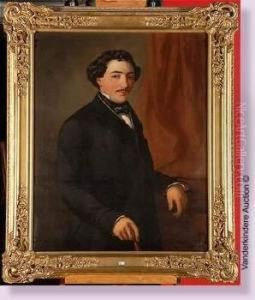Emmanuel Franciscus Verhas Paintings
Emmanuel Franciscus Verhas was a Belgian painter born in 1827, in the city of Termonde, now known as Dendermonde, within the Flemish region of Belgium. He was part of a notable family of artists, which significantly influenced his path towards becoming a painter. Emmanuel was especially recognized for his skill in genre painting, a style that depicts scenes of everyday life with a particular emphasis on the social customs and manners of the period. His works often captured the elegance and vibrancy of bourgeois life, offering a window into the 19th-century Belgian society.
Verhas's artistic journey was significantly shaped by his education and the cultural milieu of his time. He studied art at the Royal Academy of Fine Arts in Antwerp, a prestigious institution that has nurtured many prominent artists in Belgium and beyond. During his time at the academy, Emmanuel was exposed to the works of the Flemish masters, which had a lasting influence on his artistic development. His style is often characterized by a meticulous attention to detail, a vivid portrayal of textures, and a keen observation of light and shadow, elements that he skillfully combined to bring his subjects to life.
Throughout his career, Emmanuel Franciscus Verhas remained active in the Belgian art scene, participating in numerous exhibitions and gaining recognition for his contributions to genre painting. His works were appreciated for their narrative quality, often telling stories through the expressions and interactions of the figures depicted. Despite the popularity of his genre scenes, Verhas also ventured into portrait painting, where his talent for capturing the personality and essence of his subjects was equally evident.
Verhas's contributions to Belgian art were recognized in his time, and he enjoyed the patronage of the Belgian bourgeoisie, who were keen collectors of his works. His paintings can be found in several Belgian museums, where they continue to be admired for their historical value and artistic merit. Emmanuel Franciscus Verhas passed away in 1909, leaving behind a legacy that continues to be celebrated for its insight into 19th-century Belgian culture and its exquisite execution. His work remains an important part of Belgium's artistic heritage, reflecting the social and cultural dynamics of his era through the lens of his remarkable talent.
